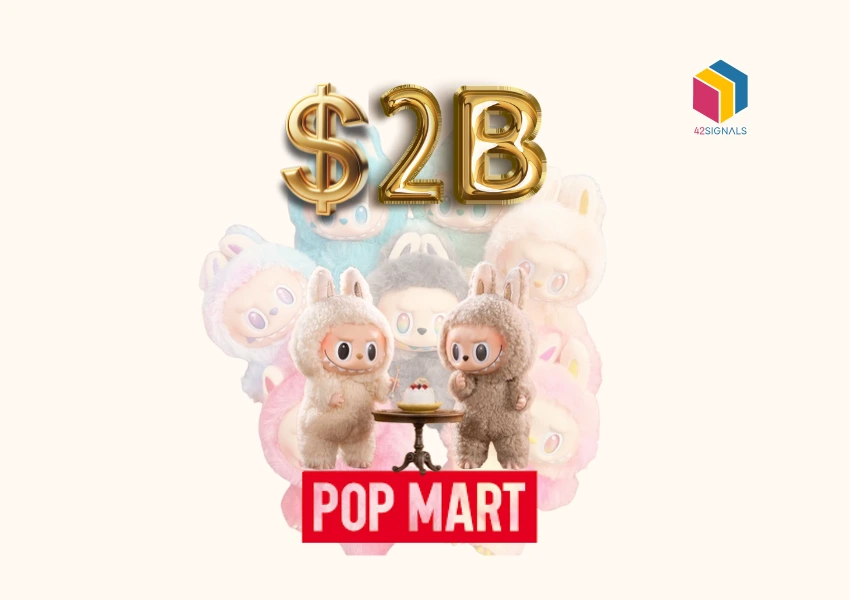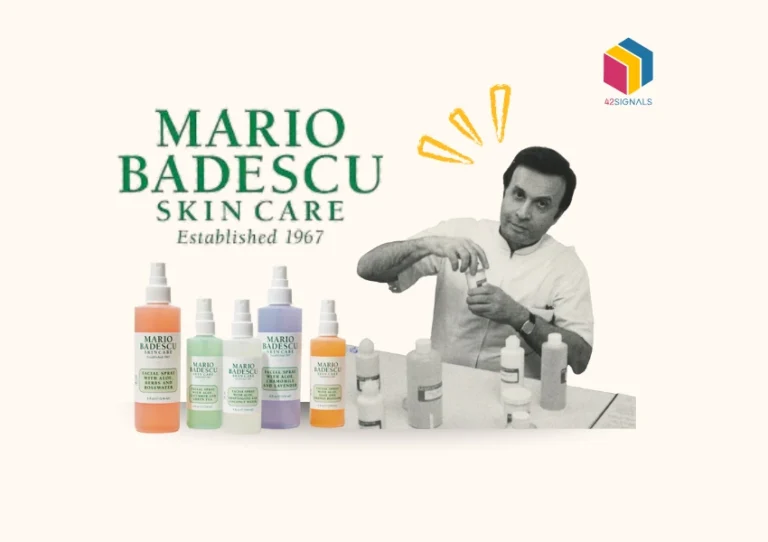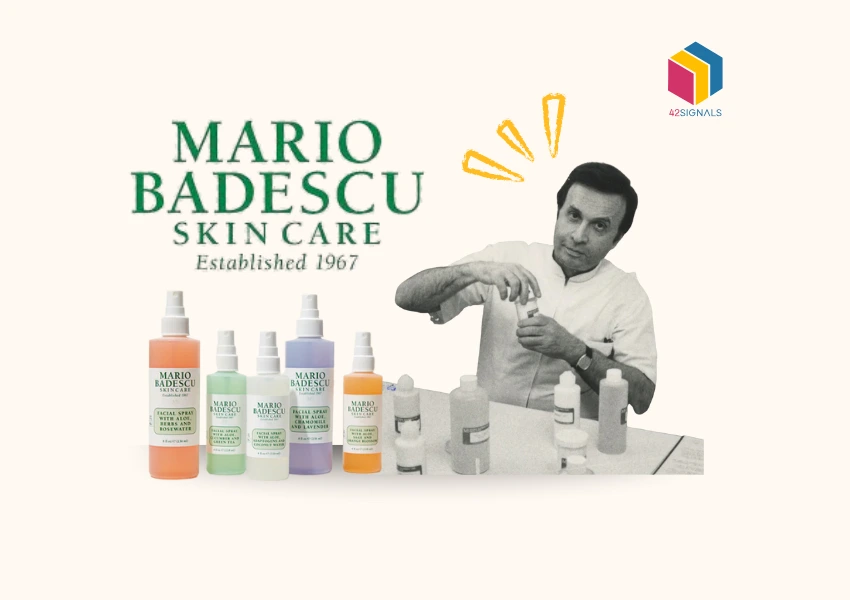- So, What Exactly Is This Labubu Thing? Demystifying the Monster
- The Lightning Strike: Kasing Lung Meets Popmart’s Machine
- Cracking the Code: Why the Blind Box Strategy is Pure Neurological Gold
- Beyond the Box: The 5 Pillars of Labubu’s Enduring Appeal
- Popmart’s Ecosystem: The Engine Room of the Frenzy
- Inside the Collector’s Mind: The Psychology That Fuels the Fire
- By the Numbers: The Scale of the Plastic Empire
- Storm Clouds Gathering: Challenges for the Labubu Kingdom
- The Labubu Playbook: 8 Marketing Lessons Any Business Can Steal
- What Every Brand Can Steal from Labubu
Walk into any trendy mall from Shanghai to Los Angeles lately, and you’ll likely spot them: Brightly colored vending machines or boutique stores overflowing with small, sealed boxes. Inside? The unpredictable charm of Labubu – that sharp-toothed, wide-eyed, mischievous little monster with horns.
What began as a doodle in a Hong Kong artist’s sketchbook has exploded into a global cultural phenomenon, fueling Popmart’s multi-billion-dollar empire. But this isn’t just luck. It’s a meticulously crafted masterclass in modern consumer psychology, brilliant design, and retail innovation.
Let’s peel back the layers of this plastic powerhouse and uncover exactly why Labubu matters – and what your business can steal from its playbook.
So, What Exactly Is This Labubu Thing? Demystifying the Monster
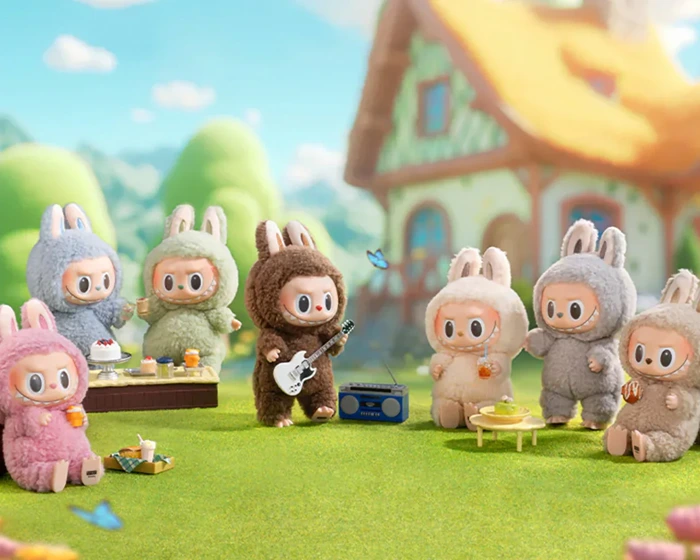
Image Source: Bagholic Boy
Created by the incredibly talented Kasing Lung around 2015, Labubu emerged as the breakout star of Lung’s “The Monsters” universe. Visually, it’s defined by:
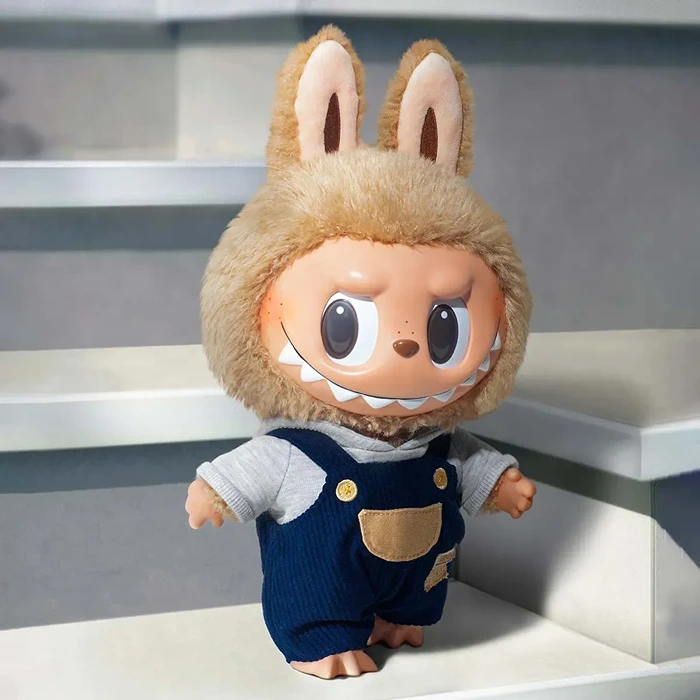
- Big eyes that are shiny and pretty to look at, sometimes they can be moved
- A massive grin adorned by sharp, pointy teeth
- Intentional Ambiguity: This is key. Labubu has no official backstory. Is it friendly? Mischievous? Downright villainous? Kasing Lung leaves it open. This blank canvas allows collectors to project their own narratives and emotions onto the figure. You’re not just buying a Labubu doll; you’re adopting a tiny, enigmatic personality for your shelf.
The Lightning Strike: Kasing Lung Meets Popmart’s Machine
Kasing Lung wasn’t an unknown. He was (and is) a highly respected figure in the niche world of designer vinyl art toys – a scene known for limited editions, high prices, and gallery shows. His intricate, character-driven sculptures had a dedicated following. Enter Popmart.
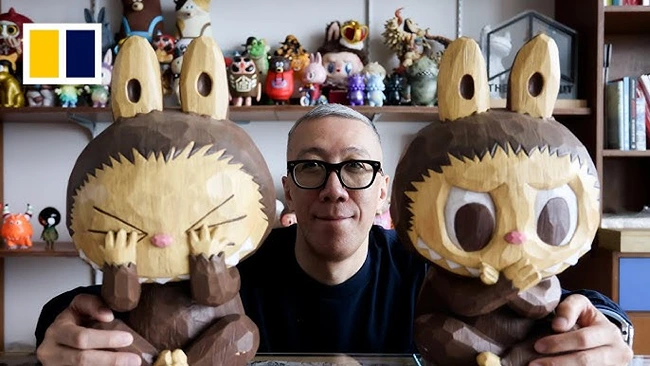
Image Source: YouTube
Founded in 2010, Popmart started as a simple chain selling assorted gifts and trinkets. But founder Wang Ning had a vision: democratize designer art toys. He saw the passion in the niche collector market and believed it could go mainstream. The pivotal moment came when Popmart partnered with Kasing Lung, recognizing the unique appeal of his “Monsters,” especially Labubu.
This synergy was explosive:
- Artistic Integrity: Popmart didn’t demand that Lung dilute his vision. They embraced Labubu’s inherent weirdness.
- Mass Production Genius: Popmart mastered high-quality, affordable manufacturing. Suddenly, a piece of Kasing Lung’s art wasn’t $300+; it was $12-$15 in a blind box.
- Distribution Revolution: Instead of exclusive galleries, Popmart flooded channels: their own sleek stores, thousands of automated vending machines (over 2,100 in China alone by 2023 – Source: Popmart Annual Report), and a powerful e-commerce platform. You couldn’t escape Labubu.
- The Blind Box Catalyst: Popmart didn’t invent blind boxes, but they weaponized them for art toys, making Labubu the perfect test subject. More on this atomic reaction next.
This partnership wasn’t just business; it was alchemy. Lung brought the artistic soul, Popmart brought the scalable engine, and Labubu became the rocket fuel.
Cracking the Code: Why the Blind Box Strategy is Pure Neurological Gold

Image Source: Stock X
You simply cannot discuss Labubu’s rise without dissecting the blind box strategy. Here’s how they did it –
- Buy a Sealed Box: You know the theme (“Labubu the Gardener,” “Labubu & Friends,” “Spooky Labubu”). You know the possible figures.
- The Unknown: You have NO IDEA which specific figure or variant is inside your box until you physically open it.
- The Gamified Elements: Each series typically includes:
- Common figures (easy to get).
- Slightly rarer figures.
- One or two ultra-rare “Secret” or “Hidden” variants (sometimes with odds as low as 1:144 or even 1:720!).
Why does this tiny box trigger such massive behavior?

- FOMO on Steroids: Knowing there’s a chance (however slim) of pulling that glittery, glow-in-the-dark, or gold-leafed Labubu keychain secret variant creates relentless pressure. Seeing someone else post their rare find online? Instant FOMO. “Maybe my next box…” becomes a mantra.
- The Completionist Compulsion: Humans are wired to seek completeness. The blind box model deliberately makes completing a set challenging. That one missing secret, Labubu, haunts you. It transforms buying from a single transaction into a quest. How many boxes will it take? The uncertainty fuels repeat purchases.
- Social Currency & Community Glue: The shared experience is massive. Unboxing videos are a huge genre on YouTube, TikTok, and Xiaohongshu (Little Red Book). Trading duplicates (“I have 3 Gardener Labubus, need a Skater!”) builds communities online and offline. Pulling a rare variant grants instant status within the Labubu tribe. It’s not just collecting; it’s participating in a shared ritual.
- Popmart’s Execution: They made it seamless. Affordable price points ($9-$15), irresistibly cute box art, and ubiquitous availability (app, store, vending machine) removed friction. By 2022, they boasted over 14 million registered members on their app, a testament to the model’s addictive reach (Source: Popmart IPO Prospectus). Labubu, with its perfect blend of charm and edge, became the poster child for why this strategy works so well.
Beyond the Box: The 5 Pillars of Labubu’s Enduring Appeal
While the blind box provided the perfect stage, Labubu itself possessed star quality. Its popularity isn’t accidental; it’s engineered brilliance:

Image Source: Reddit
- Relentless Innovation & Variety: Popmart and Kasing Lung never let Labubu stagnate. Series after series reinvents the character:
- Themes: Gardener, Skater, Wizard, Chef, Astronaut, Mermaid, Vampire, Christmas Elf – the list is endless.
- Styles: Glitter, matte, translucent, flocked (fuzzy), metallic finishes.
- Scales & Formats: Standard blind box figures, mini keychain versions, larger “Mega” collectibles, massive high-end art resin statues.
- Collaborations: Teaming up with brands (like Sanrio for a Hello Kitty crossover), artists, or cultural icons (Chinese New Year editions). This constant churn creates perpetual novelty and FOMO. What will Labubu become next? There’s always a new Labubu doll or figure to covet.
- Authentic Artistic Pedigree: Kasing Lung’s reputation as a serious artist is crucial. Collectors aren’t just buying mass-produced plastic; they feel they own a piece of authentic, credible art. This perception elevates Labubu far above typical toy fare and justifies the passion (and secondary market prices). Popmart carefully maintains this link, ensuring Lung’s vision remains central.
- Silent Storytelling & Emotional Projection: Despite no official backstory, Labubu oozes personality. Its poses (head tilted quizzically, arms crossed defiantly, grinning mischievously) and expressions invite collectors to imbue it with their own stories and emotions. Is your Labubu a prankster? A guardian? A tiny chaotic force? This open-endedness fosters a deeper, more personal connection than a pre-defined character ever could. It becomes your monster.
- Cultivating the Cult: Popmart actively, aggressively fosters the Labubu community. This isn’t passive fandom; it’s actively nurtured:
- The Popmart App: A central hub for browsing, buying blind boxes digitally, tracking your collection, seeing what others pulled, joining discussions, and trading figures. It gamifies the entire experience.
Popmart’s Ecosystem: The Engine Room of the Frenzy
Popmart didn’t just create a hit toy; they built a self-sustaining ecosystem designed to maximize engagement and spending. Their use of ecommerce market intelligence is particularly ruthless:
- Physical: Eye-catching stores (300+ globally) and ubiquitous vending machines (thousands globally) create impulse-buy heaven. Seeing a wall of Labubu blind boxes is incredibly tempting.
- Digital: The slick Popmart app is the command center. Browse, buy digital blind boxes (delivered physically), track collections, trade, chat, and see real-time pulls.

Image Source: Los Angeles Times
- E-commerce: Robust online store for direct purchases and larger items. The experience is consistent everywhere.
- Data is the New Oil: Popmart leverages ecommerce market intelligence relentlessly:
- Tracking app browsing: Which series gets the most views? Which specific figures do users zoom in on?
- Analyzing purchase patterns: How quickly do boxes sell out? Which secret variants cause the biggest surge in repeat buying?
- Monitoring social buzz: What are collectors clamoring for next? What themes spark the most conversation? This data directly informs future Labubu designs, release schedules, rarity levels, and even pricing. They know what makes collectors tick.
- Limited Quantities: Artificial scarcity fuels urgency. Will you get one?
- Timed Releases: Online queues form on the app. Sellouts often happen within minutes or even seconds.
- Hype Teasers: Leaked images, artist sketches, and cryptic countdowns build anticipation for weeks beforehand. Miss out? The regret fuels even more determination for the next drop.
- The Secondary Market as a Feature, Not a Bug: Popmart tacitly understands that a thriving secondary market (on platforms like Xianyu in China or eBay globally) fuels primary demand. Knowing that a rare Labubu doll could be worth 10x or 50x its retail price adds a potent layer of perceived value and investment potential to the hunt, even if most collectors never sell.
Inside the Collector’s Mind: The Psychology That Fuels the Fire
Understanding collector psychology is fundamental to Labubu’s dominance. It’s about deep-seated human drives:
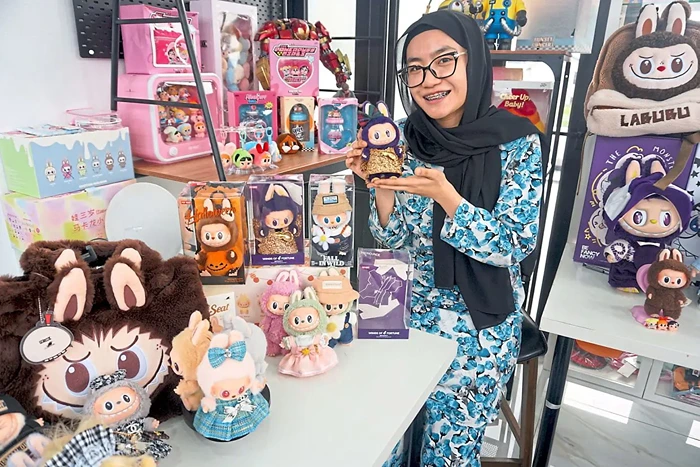
- The Hunter-Gatherer Instinct (Modernized): The blind box strategy directly taps into our primal urge to hunt and gather. The search for the rare variant, the strategy in buying multiple boxes, the triumph of the find – it’s a powerful, rewarding loop.
- Nostalgia, Rebooted: Collecting triggers nostalgia, but Labubu modernizes it. Millennials and Gen Z, raised digitally, crave tangible experiences. Curating a Labubu collection provides a physical anchor, a way to express identity through carefully chosen objects, filling a void left by the decline of things like physical music or sports card collecting.
- The Status Game: Within the Labubu community, your collection is your reputation. Owning a complete set, snagging a rare secret variant (especially the coveted “Labubu the Skull Panda”), or displaying a massive limited-edition resin statue signals dedication, luck, and taste. It’s social capital. Posting that rare Labubu keychain find on Instagram isn’t bragging; it’s asserting your place in the tribe.
- The Completionist Curse: That nagging feeling when a set is incomplete is psychologically potent. The blind box model exploits this perfectly, turning the quest for the final piece into an obsession. The brain seeks closure.
By the Numbers: The Scale of the Plastic Empire
The impact of Labubu is quantifiable and staggering, acting as a major pillar for Popmart’s valuation:
- Popmart’s Market Cap: Following its December 2020 IPO on the Hong Kong Stock Exchange, Popmart’s market capitalization surged, consistently valuing the company well above $2 billion, reaching peaks near $7 billion during hype cycles. While Popmart has other IP, analysts consistently cite Labubu as a primary driver of brand value and investor confidence (Source: Bloomberg, Reuters, HKEX Filings).
- The Global Collectibles Boom: The market Popmart helped supercharge is enormous. Research firm Frost & Sullivan estimated the global “trendy toy” market (heavily driven by art toys and blind boxes) reached $44.8 billion in 2023. Popmart, with Labubu as its flagship, is a dominant player in this explosive growth (Source: Frost & Sullivan Report cited in Popmart Prospectus & Industry Analyses).
- Labubu’s Direct Impact: Specific Labubu series consistently ranks as Popmart’s top sellers. Popular drops routinely sell hundreds of thousands of units within minutes or hours of release. The secondary market thrives, with rare secret variants regularly selling for $500-$2000+, and exceptionally rare or early pieces fetching astronomical sums from dedicated collectors (Source: Documented secondary market sales on Xianyu, eBay, collector forums).
Storm Clouds Gathering: Challenges for the Labubu Kingdom
No phenomenon this big exists without friction. Labubu faces significant headwinds:
- Blind Box Fatigue & Market Saturation: The sheer volume of releases – not just Labubu, but countless other characters and brands adopting the model – risks overwhelming collectors. Wallet fatigue and decision paralysis are real threats. Can Labubu maintain its “must-have” status when collectors are bombarded with choices?
- The Counterfeit Tsunami: Rampant counterfeiting plagues the industry. Fake Labubu dolls and blind boxes flood online marketplaces, often at lower prices. These fakes range from crude knock-offs to sophisticated “super fakes” that fool even seasoned collectors. This erodes brand value, confuses new buyers, and costs Popmart and legitimate sellers significant revenue. Industry estimates suggest counterfeits cost the global toy collectibles market hundreds of millions annually. Popmart invests in holograms, unique codes, and authentication apps, but it’s a relentless arms race.
- Scalpers & Secondary Market Volatility: The artificial scarcity model inevitably attracts scalpers who use bots to buy up large quantities of hyped releases solely for resale at inflated prices. These prices out genuine fans and create frustration, potentially damaging brand goodwill. Managing the secondary market without killing the hype is a delicate balance.
- The Plastic Problem: Sustainability concerns are growing louder. Blind boxes generate significant plastic waste (figure + packaging), especially when collectors buy dozens, chasing rares. Popmart faces increasing pressure to innovate with recycled materials, biodegradable plastics, and reduced packaging. Their reputation as a forward-thinking brand hinges on meaningful progress here. Initiatives like trials of recycled PET figures are steps, but scale and consumer acceptance are hurdles.
- Art vs. Algorithm: As Popmart grows, does data-driven decision-making risk diluting Kasing Lung’s artistic vision? Can Labubu retain its unique edge if designs are increasingly influenced by sales metrics predicting the “safest” cute factor? Maintaining authenticity while scaling is a core tension.
The Labubu Playbook: 8 Marketing Lessons Any Business Can Steal
The Labubu phenomenon offers actionable strategies far beyond the toy aisle:
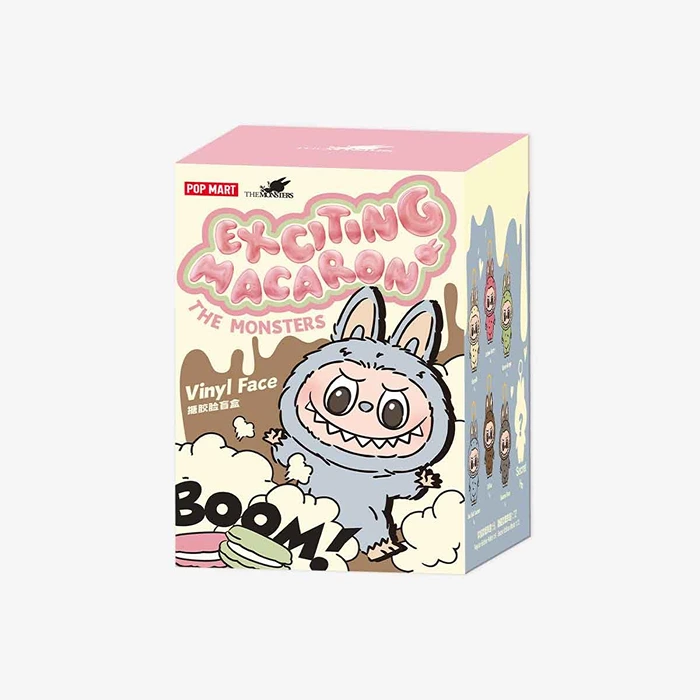
- Embrace Controlled Mystery: The blind box strategy works because surprise triggers dopamine. How can you inject elements of delightful uncertainty? Think mystery bundles, sealed content tiers, randomized bonuses, or limited-edition “surprise and delight” gifts for loyal customers. Make discovery part of the experience.
- Design is Your Foundation (Make it Memorable): Labubu proves that distinctive design is non-negotiable. Don’t aim for blandly inoffensive; aim for memorable, evocative, and conversation-starting. Invest heavily in aesthetics that resonate emotionally with your target audience. “Ugly-cute” worked here; find your unique edge.
- Build Scarcity WITH Community: Scarcity alone is hollow. Its power comes from being desired within a community. Foster your tribe first – create spaces (online forums, social groups, events) where passion can grow. Scarcity then becomes a shared challenge, a badge of honor within that group. Popmart built the Labubu legion before the drops became chaotic.
- Data is Your Compass (Ecommerce Market Intelligence): Popmart lives and breathes data. Track everything meaningfully: browsing paths, cart abandonment reasons, engagement with content, social sentiment, and support queries. Use this ecommerce market intelligence not just to sell more, but to understand why people buy and what truly excites them. Anticipate desires.
- Smash the Channel Barriers (Omnichannel is Mandatory): Your customers live fluidly online and offline. Ensure a seamless, consistent, and frictionless experience everywhere – website, app, physical store, social media, and customer service. Make buying, returning, and engaging effortless regardless of touchpoint. Popmart’s vending machines aren’t gimmicks; they’re strategic touchpoints.
- Collaborate Authentically, Not Opportunistically: The Kasing Lung partnership worked because it was genuine. Popmart respected his artistry; he benefited from their scale. Find partners whose vision aligns with yours and where the collaboration creates something new and exciting for both audiences, not just a lazy logo swap.
- Tap into Deep-Seated Psychology (Collector Psychology): Understand the core emotional drivers beyond basic needs: The thrill of the hunt, the desire for completion, the need for status/recognition, the comfort of nostalgia, the joy of ownership. How can your product or service fulfill these deeper cravings? Labubu isn’t a toy; it’s a key to these feelings.
- Innovate Relentlessly (Format, Function, Feel): Labubu stays relevant by constantly evolving – new themes, sizes (like the keychain), materials, and collaborations. Don’t just iterate; explore entirely new formats or applications for your core offering. Keep your audience guessing (in a good way) about what’s next.
What Every Brand Can Steal from Labubu
Popmart didn’t just sell a Labubu keychain; they sold miniature adventures, social status, emotional comfort, and a sense of belonging, all wrapped in a deceptively simple $12 box. That’s the alchemy. That’s the billion-dollar lesson.
Whether you’re selling SaaS, sneakers, or sandwiches, ask yourself: What’s our Labubu moment? How do we move beyond the product to sell the powerful, human experience wrapped around it? Because in the end, people don’t line up for plastic. They line up for magic, community, and a tiny piece of controlled chaos in an unpredictable world.
If you liked this article, read –
Quaker Oats’ Pricing Strategy: Balancing Affordability and Premium Positioning
Kellogg’s Cereal: How They Dominated the Breakfast Aisle
Coca-Cola’s Pricing Playbook: Lessons in Global Brand Strategy
Procter & Gamble’s Success: How They Climbed the Industry Ladder to the Top
7-Eleven’s Pricing Agility: How Convenience Stores Win with Hyperlocal Data
